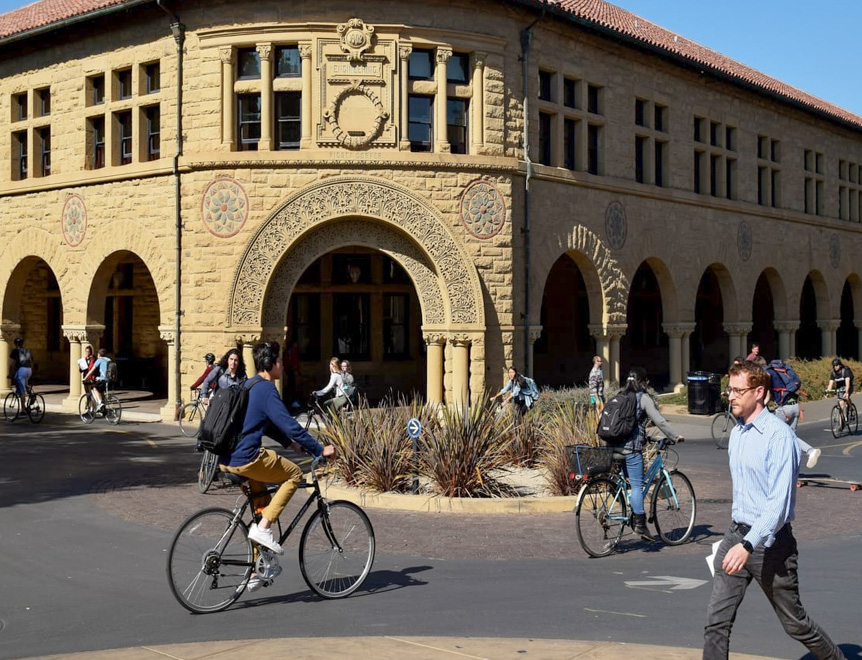The sizable detours planted in the middle of campus, which according to the University are brought on by two separate construction projects, have built frustration among students.
One project, which begins near the Claw statue and extends to the Clock Tower, is known as the Lasuen Escondido Circulation Improvements (LECI). The other, which loosely encircles half the building housing Cubberley Auditorium, is called the Graduate School of Education (GSE) Renovation and New Building project. According to University spokesperson Luisa Rapport, while the LECI construction will wrap up this summer, the GSE project is not slated to be finished until Spring 2025.
Rapport wrote that the LECI project is intended to improve “circulation and safety for pedestrians and bicyclists” using the Panama-Lasuen intersection. Already an intersection that receives high traffic volumes, the LECI project is also designed to reroute traffic that will be impeded by the GSE project’s blockage of the path connecting Main Quad to Meyer Green, Rapport wrote.
The GSE Renovation and New Building project includes “extensive improvements to the existing Education/Cubberley Building (referred to as the North Building)” along with “construction of a new 4-story South Building,” Rapport wrote.
Some students said the timing of the construction projects forced them to plan new routes when traversing campus.
Alanna Dorsey ’24 lived on campus over the summer when there was little construction occurring. “Why didn’t they do [construction] then?” she said. Speaking of construction in general, Dorsey said, “Not only is it a hassle to get to class but I also have to reconstruct my map of Stanford every other week.”
Alyssa Charley ’23 also wished “long term projects [were] planned better,” potentially with summer start dates. “Walking in a hurry has made the detours a headache for me,” Charley said.
Rapport wrote that “Whenever possible, construction projects are planned to occur during school closures and/or the summer months,” but breaks may not provide enough time to complete construction. Summer activities like camps and conferences may also preclude construction from proceeding as planned, Rapport wrote.
Logistical concerns also shape the timing of construction. According to Rapport, project planning “can take weeks, months or years, depending on the scale, scope and schedule.” The schedule is also subject to alteration due to “factors outside of university control” like “permitting and inspections, contractor availability, weather conditions, funding, and availability of skilled labor, materials, and equipment.”
Some students offered constructive criticism over the LECI project’s execution, given the typically bustling nature and centrality of the Panama-Lausen intersection.
Isandro Malik ’23 said it would have been ideal for the construction to have been “done in parts or with better planning to allow for some passing traffic rather than cutting off an entire section.” Malik also said the detour’s lack of paths for bicycle and scooter traffic was inconvenient. There is currently only a path for pedestrians.
Having lost his voice, Zach Lo ’23 gestured an emphatic thumbs-down to campus detours. When asked what feelings the detours evoke in him, he whispered one word: —”rage.”
To monitor construction progress, Stanford community members can find updates on the University’s Land, Buildings and Real Estate division website.
